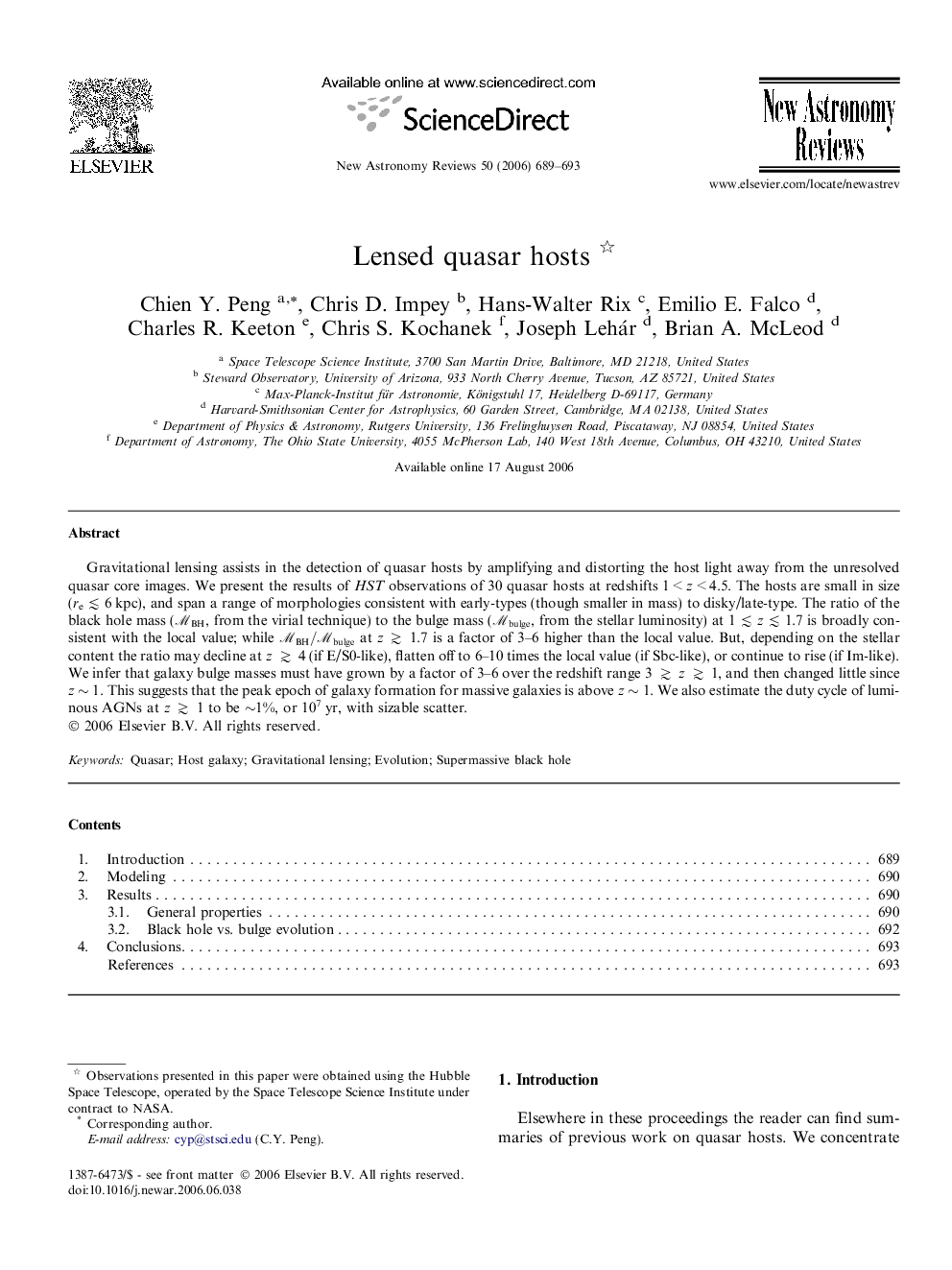| Article ID | Journal | Published Year | Pages | File Type |
|---|---|---|---|---|
| 1780304 | New Astronomy Reviews | 2006 | 5 Pages |
Gravitational lensing assists in the detection of quasar hosts by amplifying and distorting the host light away from the unresolved quasar core images. We present the results of HST observations of 30 quasar hosts at redshifts 1 < z < 4.5. The hosts are small in size (re ≲ 6 kpc), and span a range of morphologies consistent with early-types (though smaller in mass) to disky/late-type. The ratio of the black hole mass (MBHMBH, from the virial technique) to the bulge mass (MbulgeMbulge, from the stellar luminosity) at 1 ≲ z ≲ 1.7 is broadly consistent with the local value; while MBH/MbulgeMBH/Mbulge at z ≳ 1.7 is a factor of 3–6 higher than the local value. But, depending on the stellar content the ratio may decline at z ≳ 4 (if E/S0-like), flatten off to 6–10 times the local value (if Sbc-like), or continue to rise (if Im-like). We infer that galaxy bulge masses must have grown by a factor of 3–6 over the redshift range 3 ≳ z ≳ 1, and then changed little since z ∼ 1. This suggests that the peak epoch of galaxy formation for massive galaxies is above z ∼ 1. We also estimate the duty cycle of luminous AGNs at z ≳ 1 to be ∼1%, or 107 yr, with sizable scatter.
